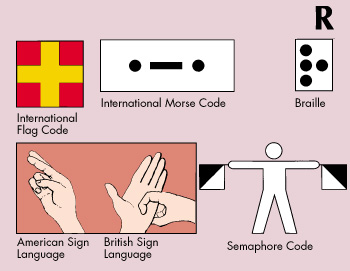R is the 18th letter of the alphabet used for the modern English language. It is also used in a number of other languages, including French, German, and Spanish. The R sound occurs in such words as run, very, far, hurry, and purr. See Alphabet .

A dialect is a variation of a language used by a group of speakers. In certain English dialects—especially some spoken in the United States, the United Kingdom, and Australia—the letter R is not pronounced after a vowel.
Scholars believe the letter R evolved from an Egyptian hieroglyph (pictorial symbol) that represented a head. Hieroglyphs were adapted to be used for a Semitic language by around 1500 B.C. The alphabet for this Semitic language—the earliest known alphabet—is called Proto-Sinaitic. By 1100 B.C., an alphabet for another Semitic language, Phoenician, had evolved from Proto-Sinaitic. See Semitic languages .
The Phoenician letter that can be traced to the Egyptian head hieroglyph is the 20th letter of the Phoenician alphabet, resh. The Phoenicians used the letter to represent the beginning R sound of resh, which was their word for head. Around 800 B.C., when the Greeks adapted the Phoenician alphabet, resh became rho, which was used for the same sound.

When the Etruscans adopted the Greek alphabet about 700 B.C., they continued to form rho as the Greeks had, much as a modern P is formed. This created no confusion, as P itself was formed like a shepherd’s crook. The Romans adopted the alphabet from the Etruscans by around 650 B.C., however, and they began to write a P in the shape of the modern P. This meant that P and R began to look alike. A small tail was then added to R to distinguish the two letters.
